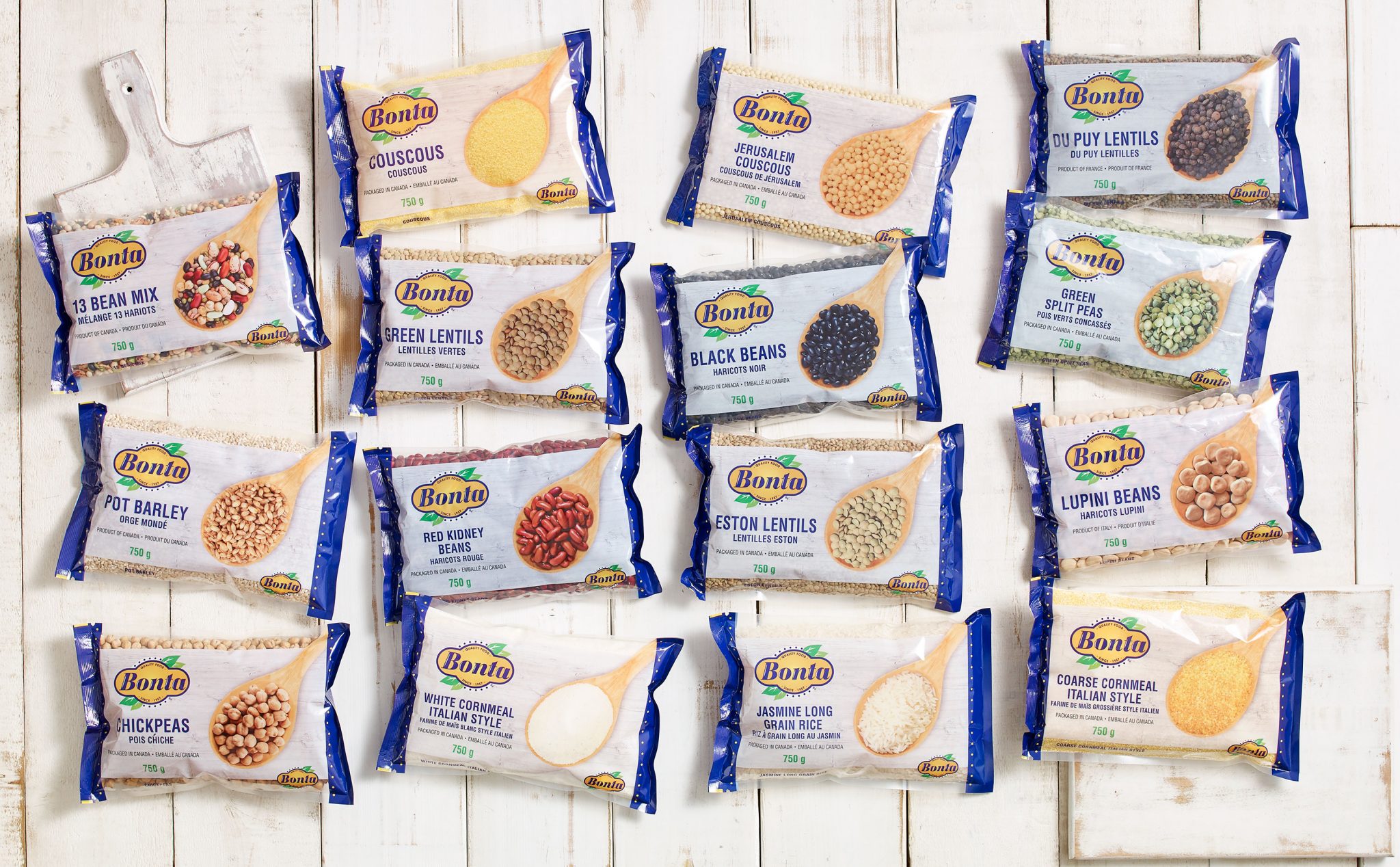
Beans are a healthy, nutritious, and inexpensive alternative source of protein – and make so many recipes absolutely delicious and meaty. Many people only think of beans for winter dishes, like soups and stews, but beans are wonderful added to green salads, pasta salads, or served with grilled meats in the summer. Bonta carries a huge assortment of dried beans – there’s one perfect for nearly any meal occasion.
In Italy, beans are used in pasta dishes, salads, mashed and spread on bruschetta toasts, in soups and thicker stews. They are also served as a side dish with steaks and sausage. Grown throughout the country, in both northern and southern Italy, legumes can be found starring in many regional dishes. Packed with protein and soluble fiber, beans are both delicious and satisfying. In regions of Northern Italy, dried beans were, and continue to be, a satisfying solution to the cold weather, providing an important staple with a longer shelf life, ideal when fresh produce is not available. Dried legumes include beans, peas, and lentils.

Most dried beans need to be soaked before cooking. Soaking beans allows the dried beans to absorb water, that helps to dissolve the starches. You can cook beans without soaking, but it takes longer, and some people think the beans taste better when soaked. In general, the larger the bean, the longer they need to soak: and the longer you soak beans, the faster they cook. Soak most beans in three times their volume of cold water for at least 6 hours or overnight before cooking. You can also ‘quick soak’ them. The best way is to put them in cold water; bring them gently to a boil and then with saucepan off the heat, allow them to remain in the water for 1 to 2 hours. Always discard the water in which the beans are soaked. Split peas and lentils don’t need to be soaked. They take about 30 minutes to cook.
How to Cook Dried Beans
After soaking, drain the beans and add fresh water to the cooking pot. The conventional wisdom about salting beans is that salt toughens the skins as they cook. So, it is best to add salt at the end of the cooking time. Do not add acidic ingredients, like vinegar, tomatoes or tomato juice, as this will slow the cooking process. Instead, add these ingredients
when the beans are just tender.
Bring the beans to a boil, and then lower the heat and simmer for 1 to 2 hours, or until the beans are tender. It is difficult to give exact cooking times for beans because a lot depends on the variety and age of the beans. Check your package of beans for the recommended cooking time. But also check the beans occasionally. When dried beans boil, a foam forms on the top of the cooking liquid. This foam is water-soluble protein released from the beans and it will be absorbed back into the bean cooking liquid. It is not necessary to remove the foam. Beans are done when they can be easily mashed between two fingers or with a fork. Always test a few beans in case they have not cooked evenly. Did you know?
Cooked beans can be frozen up to 6 months.

